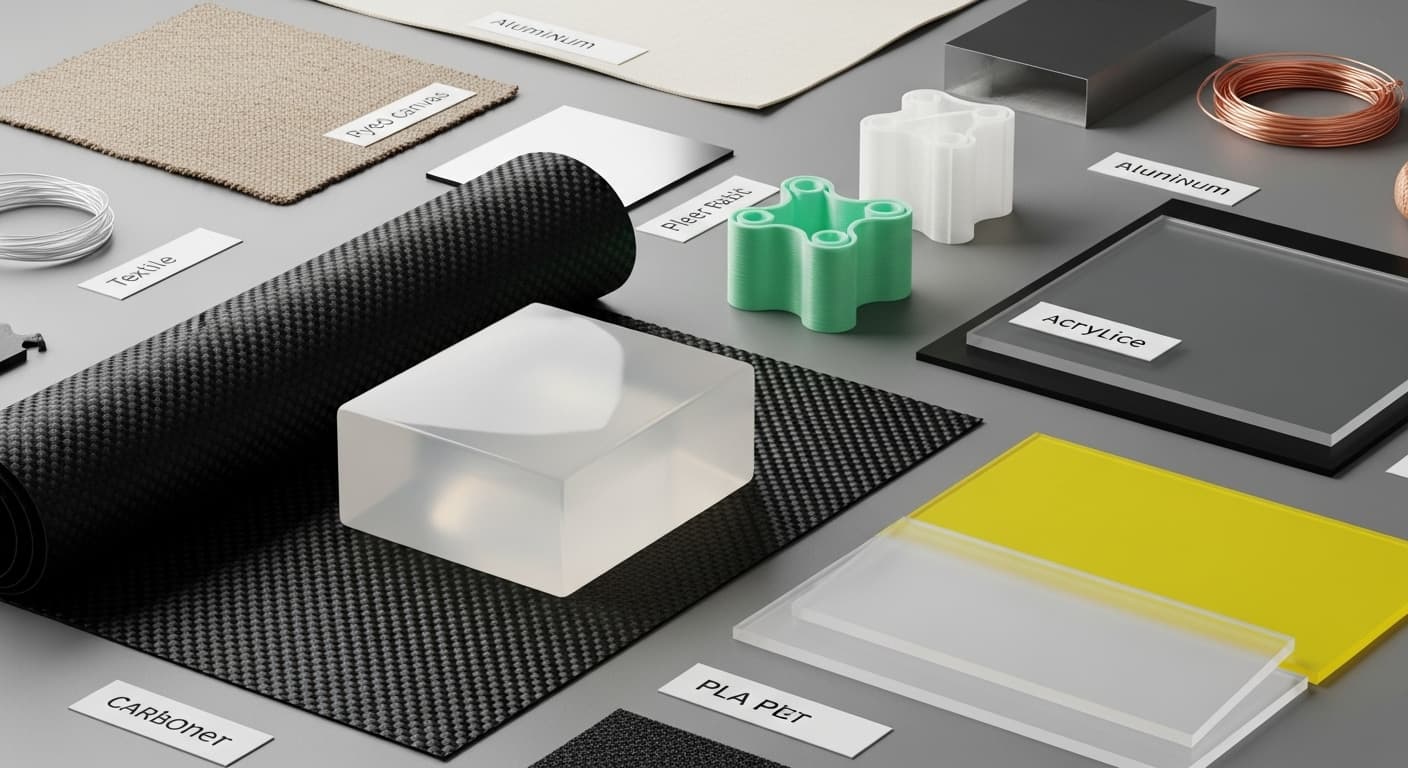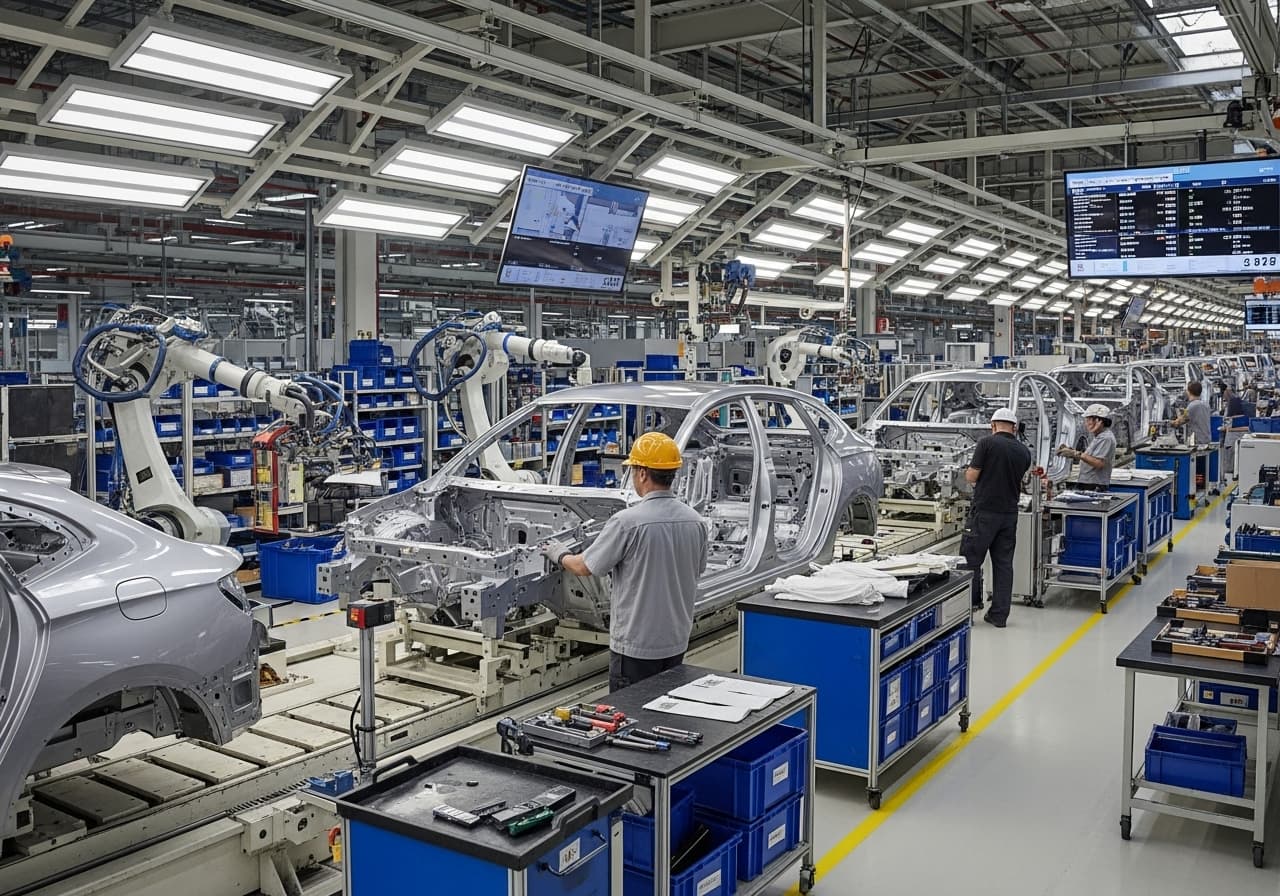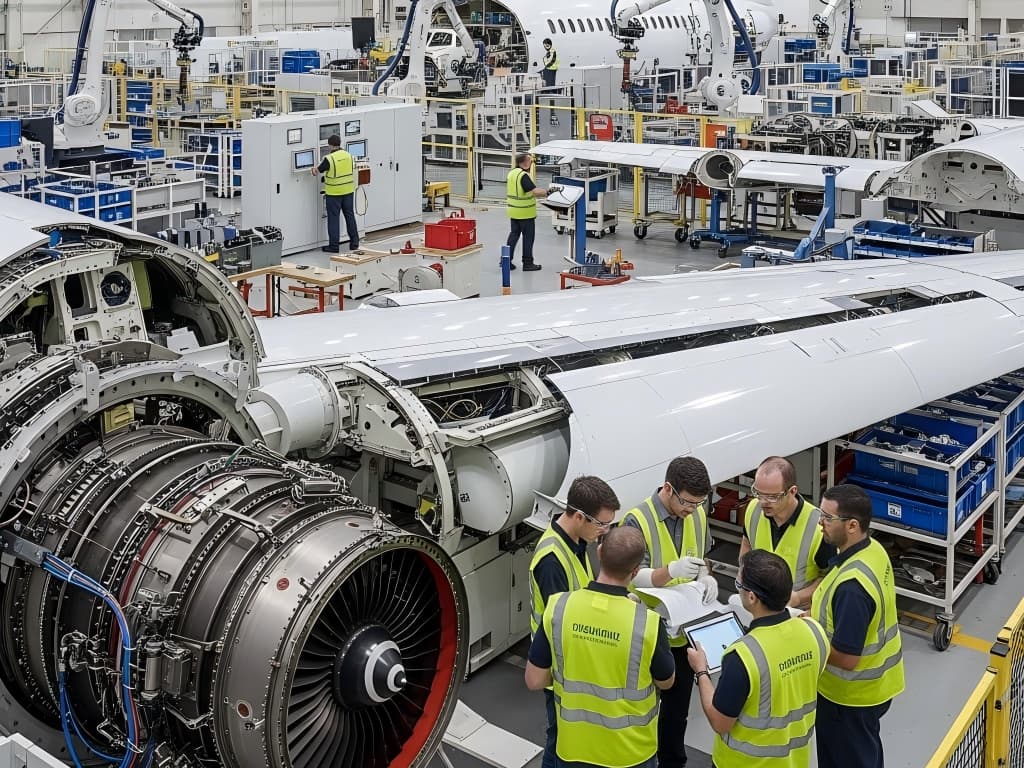The Ultimate Material Selection Guide for Manufacturing
Your Project's Success Starts with the Right Material
Selecting the right material is one of the most critical decisions in any manufacturing project. The choice impacts everything from performance and durability to cost and manufacturability. As you've rightly noted, there is no absolute "best" material, only the material that best suits your specific application requirements.
This comprehensive guide is designed to help engineers, designers, and procurement managers navigate the vast landscape of manufacturing materials. We'll break down the most common metals and plastics, and advanced composites, highlighting their key properties and typical applications to empower you to make an informed decision.

Metals: Strength, Durability, and Precision
Metals are the backbone of modern industry, chosen for their exceptional strength, thermal stability, and electrical conductivity.
Aluminum Alloys: The Lightweight Champion
Include: AL6061, AL7075, AL2024, AL5083 / AL6082, AL7050. Known for its excellent strength-to-weight ratio, corrosion resistance, and thermal conductivity, aluminum is a versatile choice for a wide range of applications.
Stainless Steel: The Corrosion-Resistant Workhorse
Include: SS304, SS316L, SS416 / SS420, SS17-4PH
With its superior corrosion resistance and aesthetic appeal, stainless steel is essential in environments where hygiene and durability are paramount.
Carbon & Alloy Steel: The Foundation of Strength
Low-Carbon Steel: 1018, A36, Q235
Medium-Carbon Steel: 1045, 45#
Alloy & Tool Steel: 4140, D2, H13, P20, SKD11
Steel is prized for its immense strength, hardness, and cost-effectiveness, making it a staple in industrial and structural applications.
Titanium, Inconel & Specialty Metals: For Extreme Environments
Ti-6Al-4V: Titanium Grade 5
Inconel: 625 & 718
Copper & Brass: C101, C110, C360
When applications push the limits of temperature, pressure, and corrosion, these exotic alloys are the answer.
Engineering Plastics: Versatility and Performance
Plastics offer a unique combination of low weight, chemical resistance, and design flexibility, often at a lower cost than metals.
Commodity Plastics (ABS, PP, PE, PVC)
Cost-effective and easy to process, these are ideal for consumer products and prototypes.
Engineering Plastics (POM, PC, PA6/66, PMMA)
These offer a significant step up in mechanical strength, stiffness, and thermal stability.
High-Performance Plastics (PEEK, PEI, PTFE, PAI)
Designed to withstand the most demanding conditions of heat, chemicals, and wear.
Advanced Composites: The Ultimate Strength-to-Weight Ratio
Composites combine materials to create a new material with properties superior to the individual components, prized for their incredible stiffness and low weight.
Carbon Fiber: Sheets, Tubes, Prepreg
The gold standard for high-performance applications where every gram counts.
Fiberglass: G10, FR4, Glass Fabric Laminate
A strong, durable, and cost-effective alternative to carbon fiber, with excellent electrical insulation properties.
Making the Right Choice: How We Can Help
Choosing the perfect material involves balancing performance requirements, operating environment, and budget. Ask yourself:
● What is the operating temperature?
● What mechanical loads will the part endure?
● Is corrosion or chemical resistance a factor?
● What is the target weight for the component?
● What is the project budget?
Feeling overwhelmed? You don't have to make this decision alone. With decades of experience across all these materials, our engineering team is here to help.
Ready to turn your design into a reality? Send Your CAD for a Free Quote & Material Consultation.

 Medical Device Prototyping
Medical Device Prototyping
 Automotive Parts Manufacturing
Automotive Parts Manufacturing
 Aerospace Manufacturing
Aerospace Manufacturing
![[Guide Updated] Please See Our New Low Volume CNC Machining Page](/uploads/20250809/e0980b58d9f1528680f9fe34ae16af14.png) [Guide Updated] Please See Our New Low Volume CNC Machining Page
[Guide Updated] Please See Our New Low Volume CNC Machining Page

